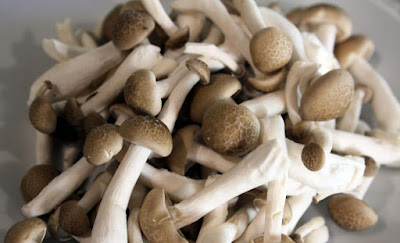Pronoun: Definition and Meaning
Merriam-Webster defines pronoun as "A pronoun is a word that is used instead of a noun or noun phrase. Pronouns refer to either a noun that has already been mentioned or to a noun that does not need to be named specifically.".
British Council defines pronoun as "Pronouns are words that take place of nouns. We often use them to avoid repeating the nouns that they refer to.".
From the above-mentioned definitions, we learn that:
1. A pronoun is a word.
2. A pronoun is used in place of a noun.
3. A pronoun refers to the noun in place of which it is used.
4. A pronoun is used for beautification of language (to avoid repeating the same noun)
Examples:
(a) John is a good guy. He helps everyone.
(b) Rocky is my friend. He lives in India.
(c) Sofia is a good student. She is good at English.
Purpose of Use
We use pronouns in place of nouns so that we don't need to repeat them again and again. And this ( avoiding the repeating the same noun) leads to the beautification of language.
Types of Pronoun
1. Pronouns based on person
2. Pronouns based on functions
1. Pronouns based on person are classified into three main categories.
(a) First person pronouns
Examples:
1. I am your teacher.
2. We are good friends.
(b) Second person pronouns
Examples:
1. You are a good guy.
(c) Third person pronouns
Examples:
1. He /She is a good student.
2. It is fine.
3. They are going.
2. Pronouns based on functions have various types. They are given below with examples.
1. Personal pronouns are used in place of proper names.
Examples:
(a) I can do it.
(b) You will go.
(c) He will eat.
(d) She is reading.
(e) They were talking.
(f) We are ready to go.
2. Indefinite pronouns don't refer to specific persons and things.
Examples:
(a) Everybody is speaking.
(b) Everyone is busy.
(c) Everything is fine.
(d) Is there anyone/anybody in the room?
(e) Do you have anything to say?
(f) There's no one/nobody in the room.
(g) Nothing is impossible.
(h) I would like to take somebody/someone with me.
(i) Something is better than nothing.
3. Demonstrative pronouns show people or things that can be near or at a distant place.
Examples:
(a) This is my pen. (Singular, Near)
(b) That is my pen. (Singular, Distant)
(c) These are my pens. (Plural, Near)
(d) Those are my pens. (Plural, Distant)
4. Interrogative pronouns are the pronouns using which we ask questions.
Examples:
(a) Who is this?
(b) What is this?
(c) Which is your pen?
(d) Whose is this pen?
5. Possessive pronouns are the pronouns that show possession or ownership.
Examples:
(a) This pen is mine.
(b) That book is yours.
(c) This phone is his.
(d) That ring is hers.
(e) This school is ours.
(f) That house is theirs.
6. Relative pronouns are the pronouns that are used to introduce relative clauses. (A relative clause with the help of relative pronoun ( Know more about relative pronoun )gives information about someone or something.)
Examples:
(a) Nadim, who is 10, is my friend.
(b) He is the person that I met yesterday.
(c) This is the book which helped me to clear the entrance test.
7. Reflexive pronouns refer back to the subject of the verb (Know more about verb ) in a sentence.
Examples:
(a) I'm teaching myself English.
(b) She cut herself with the knife in her hand.
(c) Enjoy yourself.
8. Reciprocal pronouns express mutual actions.
Examples:
(a) Nadeem and Faheem helped each other.
(b) They are helping one another.
9. Intensive pronouns emphasize nouns or another pronouns.
Examples:
(a) He did it himself.
(b) I can do it myself.
(c) You can improve your grammar yourself.
Note:- Reflexive pronouns are used as objects of a verb and Intensive pronouns are for emphasis.
Exercise 1
Identify the person of the pronouns in bold.
(a) He is eating an apple.
(b) You are my best friend.
(c) It is raining now.
(d) We will miss you.
(e) They help one another.
Answer keys:-
(a) Third person
(b) Second person
(c) Third person
(d) First person
(e)Third person
Exercise 2
Identify the types of the pronouns in bold in the following sentences.
(a) We are good friends.
(b) Everyone is happy.
(c) That is my house.
(d) What are you doing?
(e) This car is mine.
(f) The person who came yesterday is my friend.
(g) I've cut myself with a knife.
(h) They help one another.
(i) I did it myself.
Answer keys:-
(a) Personal
(b) Indefinite
(c) Demonstrative
(d) Interrogative
(e) Possessive
(f) Relative
(g) Reflexive
(h) Reciprocal
(i) Intensive
FAQs (Frequently Asked Questions)
What is a subject pronoun?
A subject pronoun is a type of pronoun that is used as the subject of a verb in a sentence as in They suggest going on a holiday.
What is an object pronoun?An object pronoun is a type of pronoun that is used as the object of a verb in a sentence as in He told me about the event.
What is an intensive pronoun?An intensive pronoun is a type of pronoun that is used to emphasize the action performed by a noun or pronoun as in John himself did it.
What is a reflexive pronoun?A reflexive pronoun refers back to the subject of a verb in a sentence as in I am teaching myself French.
What is a relative pronoun?A relative pronoun introduces a relative clause (a clause that gives additional information about someone or something) as in The boy who is standing there is my friend.
What is a possessive pronoun?


.jpg)
.jpg)















